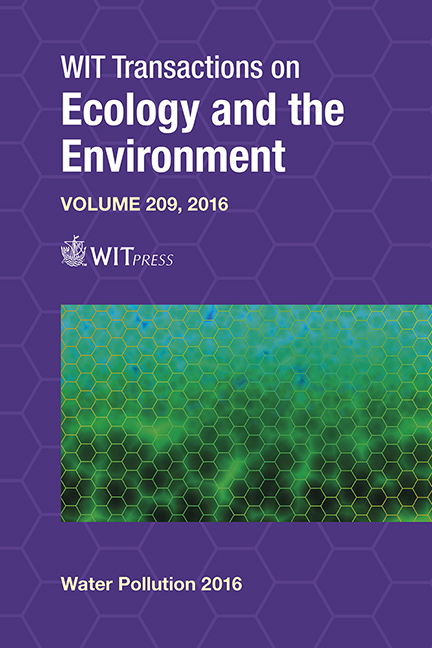Removal Of Organic Compounds From Industrial Wastewater Using Physico-chemical Methods
Price
Free (open access)
Transaction
Volume
209
Pages
11
Page Range
185 - 195
Published
2016
Size
703 kb
Paper DOI
10.2495/WP160171
Copyright
WIT Press
Author(s)
V. Minzatu, P. Negrea, A. Negrea, M. Ciopec, B. Bumbu, A. Golban, A. Vasile
Abstract
The focus of this study is purifying the wastewater from the lacquers and paint industry in Western Romania, containing different organic compounds.
The organic load in wastewater is found in the form of various organic compounds. Nonpolar organic substances lighter than water form a layer that blocks the flow of oxygen necessary, while polar substances are soluble in water and can be toxic to the fauna or create the effect of eutrophication causing disequilibrium in the biotope.
In this paper we aimed at eliminating these organic compounds from wastewater by physical-electrocoagulation and chemical-oxidation methods to ensure a high degree of removal of these compounds to discharge into the sewage. The wastewater was characterized before and after the treatment following a series of quality indicators (chemical oxygen demand COD, total organic carbon TOC, lead Pb(II), cadmium Cd(II), chrome total Crtot, copper Cu(II), nickel Ni(II), zinc Zn(II), manganese Mn(II)). The total organic carbon analysis (TOC) was performed before and after the treatment to determine the total content of organic compounds.
The resulting sludge from the wastewater contaminated with organic compounds treatment was subjected to thermal analysis.
Keywords
purge, paints, organic load, total organic carbon (TOC), wastewater





